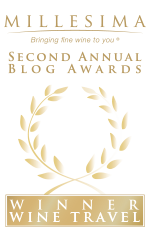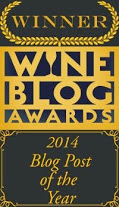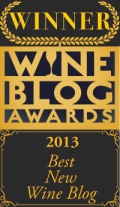If you missed my story in Forbes, here’s a second chance to read it…
In 1917, Woodrow Wilson asked Congress for a declaration of war on Germany.
In 1926, real estate on Broadway and Wall Street sold for $7 per square inch.
In 1936, Robert Redford, John McCain, and Supreme Court justice Anthony Kennedy were born.
In 1944, The United States and allied troops invaded at Normandy, known thereafter as D-Day.
In 1955, Rosa Parks was arrested for refusing to surrender her seat on a bus to a white person.
In 1959, the Cold War-Antarctic Treaty was signed, establishing Antarctica as a scientific preserve.
In 1967, race riots and Vietnam protests spread across the U.S. The 25th amendment was ratified.
In 2017, Donald Trump took office as president of the United States.
A few weeks ago, at the New York French consulate, family-owned Bordeaux estate Château le Puy opened a century’s worth of wine.
To an intimate room of trade and media guests, 13th gene
ration le Puy owners Jean Pierre and his wife Françoise Amoreau presented 27 vintages from 1917-2017, including ones from the consequential years noted above. Coincidentally, the arcane (to some) historical footnote from 1967 — ratification of the 25th amendment in response to the assassination of JFK — was in the news anew the morning of the tasting. (The amendment outlines the transition of power if the president is unable or unfit to serve; it gives the vice president and majority of the cabinet power to remove the president from office.)
Long before there was a president of the United States, however, the Amoreau family was making wine on the right bank in Bordeaux. Historical records for the property reach back to 1610. Vines blessed with views of the Dordogne Valley shared a rocky plateau with neighboring Saint-Emilion and Pomerol. The Amoreau’s called it the “hill of wonders.” Today, almost half of the 247-acre estate is under vine. Largely Merlot, of course, with a block of Semillon made into a varietal wine.

Le Puy media lunch at the French Consulate in NYC.
According to the family, their approach to viticulture hasn’t diverged far from that of their forebears. They eschew chemical agriculture, farm biodynamically (awaiting organic certification), and use a horse in the fields. I sat next to Françoise during lunch. She explained: “after WWI, fertilizers were pushed on the farmers.” While we commonly think of post-WWII as the start of the Green Revolution, she said it came “into vogue” far earlier in France. Around 1924, her husband’s grandfather, Jean, turned down the opportunity to make “vines more productive for less work” mostly because “he was stingy with money. The farm remained organic somewhat by accident” she said.
The Amoreau’s did find themselves seduced by the wave of mechanization that swept through France after the Second World War. “Modernity and convenience” drew them in, but they eventually recognized the adverse effects it had on the soil. Compact and uneven from the weight of machinery, the soil formed water pockets that harbored damaging fungal parasites. So, they returned to horse-drawn plow in 2009.
In the winery, Jean Pierre and his son Pascal work naturally with indigenous yeast. They forego fining and filtration on their top reds, use low- to no-sulphur methods, and work according to the lunar calendar. The red cuvées, “Emilien” and “Barthelemy,” are raised in barrel for 24 months.
The afternoon started with 90 minutes for guests to taste quietly through the wines, all from the Emilien line. Importer Neal Rosenthal was on hand to answer questions and interpret for Jean-Pierre, who admitted to a facility with English akin to that of a Spanish cow. The meal enjoyed after the tasting was prepared by vaunted Parisian chef Yves Camdeborde who flew in specifically for the occasion.
Starting exactly one hundred years ago, I worked through all the bottles twice. A through line of bright acidity, the backbone of an elegant house style that seemed immune to manipulation and trends, became the evident theme. Liveliness, too, especially given the extraordinary age of many wines.
The 1917—born of a year that forever changed the contemporary world — was delicate but still connected like fine, faded lace. Leather and spice served as savory canvas to the specter of cherry fruit. It haunted, much like the events of that era still do today.

When Manhattan real estate was cheap!
If I could go back in time, I’d buy Bordeaux, Burgundy, and New York real estate near Broadway and Wall Street. The 1926 showed a tinge of smoke and caramel, a silky palate still firm with acidity, although was a touch hollow on the mid-palate.
When John McCain was born, a statesman now nearing the final days of life, Jean Amoreau collected the fruit for the 1936 Emilien. According to his records included in our comprehensive tasting book, le Puy enjoyed a “great harvest and nice weather.” Last week, the wine showed vim, still evocative of its youthful days with notes of dried plum and fig.
1944 brought another year of tumult and heartbreak, the death of nearly 425,000 troops during the Battle of Normandy. It was also the only vintage of Emilien made by a woman. Aromas were delicate but still perfumed. “Earthy, sensual, with a touch of sweet fruit still lingering” I deciphered from my scrawl.
Great vintages were found across every decade, although the 2000s had just started to hit their stride. The 80s, such as the ’89, delivered that synergy of maturing fruit, soft tannin, and striking acidity that make drinking older wines so pleasurable.
While the opportunity to drink across a century of wine from an organic estate speaks for itself, taking a journey through history added another dimension of gravitas. Authentic wine, not liquid manipulated in a factory for a commercial audience, provides a snapshot of the people and conditions of a time and place. Granted, what’s in the glass tells a very specific story, but its mere existence decades or a century later gives the drinker pause to consider the events between now and when the grapes were picked, pressed, and bottled.
And if we’re to learn anything from history or a good bottle of wine, it’s that life, like the weather, is often out of our control. We do our best, take care of those around us, hopefully the land, and try to accept what’s beyond our reach. All this leaves me wondering: when someone pours a glass of Château le Puy 2017 in fifty years, what will they consider to be the defining events of our vintage? I can think of a few things, although the year’s not yet over.

2000 was an excellent vintage.













